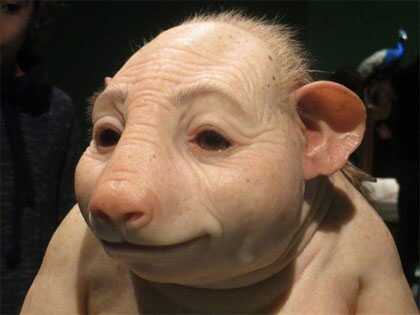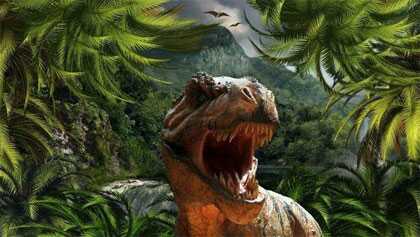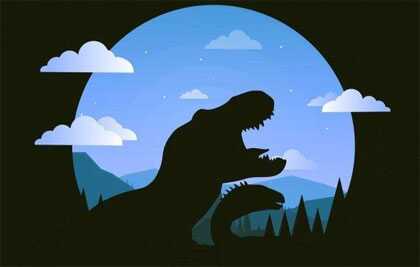 RT, Guest
RT, Guest
Waking Times
SWEDEN ’S space agency has called off a geoengineering experiment to determine whether blotting out the sun with aerosols could reverse global warming. Funded by Bill Gates, the project stoked fierce opposition from eco groups.
Proposed by researchers at Harvard University, the Stratospheric Controlled Perturbation Experiment, or SCoPEx, ultimately planned to release a cloud of calcium carbonate – more commonly known as chalk dust – into the atmosphere from a high-altitude balloon to study its effects on sunlight reaching Earth. The project proved too controversial, however, and on Wednesday the Swedish Space Corporation (SSC) said that a test flight set for June would not move forward.
“The scientific community is divided regarding geoengineering, including any related technology tests such as the planned technical balloon test flight from Esrange this summer,” the SSC said in a statement on Wednesday.
SSC has had dialogues this spring with both leading experts on geoengineering and with other stakeholders, as well as with the SCoPEx Advisory Board. As a result of these dialogues and in agreement with Harvard, SSC has decided not to conduct the technical test flight planned for this summer.
Asked at a 2010 TED talk about what “emergency measures” mankind could implement to fight climate change should all else fail, Gates suggested solar geoengineering could be an “insurance policy.”
“There is a line of research on what’s called geoengineering, which are various techniques that would delay the heating to buy us 20 or 30 years to get our act together. Now that’s just an insurance policy, you hope that you don’t need to do that,” he said, adding that the idea might be “kept in the back pocket.”
Keith, a professor of applied physics at the Harvard School of Engineering and Applied Sciences, told Reuters the SSC’s decision to scrap the experiment was “a setback,” but noted that the project could move to the US if the troubles continue in Europe. Until then, the researchers say they will continue to lobby for SCoPEx in Sweden, hoping to generate public interest and support.
The experiment could find traction in the States, as a report published last week by the National Academies of Sciences, Engineering and Medicine called on the government to devote between $100 million and $200 million to solar geoengineering projects, including technology to dim out the Sun, over the next five years.
Human-Pig Chimera Alert — Human Muscle Tissue Growing in Adult Pigs
Paul Seaburn
“THE generated intraspecies chimaeras were viable and displayed normal histology, morphology and function. Human:pig chimaeras generated with TP53-null human induced pluripotent stem cells led to higher chimaerism efficiency, with embryos collected at embryonic days 20 and 27 containing humanized muscle, as confirmed by immunohistochemical and molecular analyses. Human:pig chimaeras may facilitate the production of exogenic organs for research and xenotransplantation.”
Science-speak is often so confusing that it makes seemingly horrific things less so, but one phrase in the opening abstract of a new study jumps out in a way that anyone can understand – “Human:pig chimaeras.” The chimera (or chimaera) of Greek mythology was a monstrous fire-breathing hybrid creature made from parts of a lion, goat and serpent. Modern-day chimeras are creatures, organisms or tissue that are one body with two sets of cells and two different sets of DNA. A whole-body chimera is created when two embryos merge at a very early stage and the two embryos develop as one being. This can occur in humans when a fetus absorbs a dead fraternal twin. For comparison, a hybrid is the offspring of two different species with each of their cells containing DNA from both species — mules (horse-donkey) and ligers (lion-tiger) are examples.
Classic chimera
Human-pig chimeras in the U.S. were first created in 2017 by placing human cells in pig embryos. In a few, the cells grew into muscle and organ cells before the embryos were destroyed. The goal was to eventually grow human organs in pigs for transplanting, and more experiments involving human-rodent and human-chimpanzee chimeras allegedly occurred in China and Japan. On the other hand, these experiments in the U.S. have been tightly regulated and are quite rare. Recently, researchers at the University of Minnesota focused on some less complex but just as needed tissue – muscles to replace those lost in accidents, combat or surgical procedures. That focus resulted in the creation of more human-pig chimeras with one new twist – the embryos were allowed to grow to full term!
“It is important to note that we demonstrate that the human donor cells are located only where the pig skeletal muscle [now genetically deleted] once was. The human donor cells do not migrate to the brain or to the reproductive cells of the pig.”
Mary Garry, associate professor of medicine at the University of Minnesota’s Cardiovascular Division and co-author of the study published in the journal Nature Biomedical Engineering, answers in Inverse the chimera-elephant-in-the-room question – the human stem cells were implanted in pig embryos that had the genes required to develop pig skeletal muscle tissue removed via CRISPR gene editing. Because of that, they never strayed to the pigs’ brains or reproductive organs. Also, these were adult-derived stem cells, not embryonic stem cells.
 You know what this means?
You know what this means?
That still left a lab full of human-pig chimeras running around. Transplanting their human muscles is not yet technologically feasible nor ethically approved — Garry estimates that both will happen in the next 3 to 5 years in the U.S. What about outside the U.S.? We’ve already seen that regulations don’t matter in some countries and money talks in just about all of them. Could human-pig chimeras be supplying organs already somewhere else? That needle is moving quickly on the probability meter. Organ transplants of all kinds are in short supply, even in countries with illegal or look-the-other-way harvesting. Do the benefits outweigh the risk of unethical development or an accidental escape into the normal population? Is there a twisted scientist with the goal of creating a real Orwellian “Animal Farm” or Seinfeldian Pig Man?
Stranger things have happened … and they’re not going to stop.
Mysterious Universe
Terrifying Tyrannosaurus Rex Lookalike Unearthed in Patagonia
Jocelyne LeBlanc
A newly discovered dinosaur that looked similar to a Tyrannosaurus rex terrorized Patagonia about 80 million years ago. The fossil was discovered in Argentina’s Bajo de la Carpa Formation and the dinosaur’s braincase was exceptionally well preserved as it was surprisingly uncrushed.
The discovery of the fossil came as a complete surprise by researchers who were already in the area conducting another dig at a site called La Invernada which is located close to the city of Rincón de los Sauces in Neuquén Province. The researchers were at the site digging up an ancient sauropod dinosaur and that’s when they noticed other bones sticking out of the ground that belonged to a completely different species.
This new species has been called Llukalkan aliocranianus — Llukalkan means “the one who causes fear” in the indigenous Mapuche language, and aliocranianus is Latin for “unusual skull”. And it definitely would have caused fear as it had a strong bite, large claws, and exceptional hearing.
 Llukalkan aliocranianus looked similar to a Tyrannosaurus rex.
Llukalkan aliocranianus looked similar to a Tyrannosaurus rex.
Llukalkan aliocranianus, which was part of a dinosaur family called abelisaurids, would have measured at least 5 meters in length (16.4 feet), and looked similar to a Tyrannosaurus rex with short arms. It did, however, have many differences from the T-rex, such as its unusually short, deep skull that often contained horns, bumps, and crests.
Its most notable feature was its tiny air-filled sinus that was located in the middle ear zone. This was very unusual as it has never before been seen in any other type of abelisaurid. This would suggest that the species probably had different and much better hearing than other abelisaurids. In fact, their hearing may have been similar to that of today’s crocodiles.
In an email to CNN, Federico Gianechini, who is a paleontologist at the National University of San Luis, Argentina, and the lead author of the study, explained this in further detail, “A peculiarity of this dinosaur is that it has cavities in the ear area that other abelisaurids did not have, which could have given this species different auditory capacities, possibly a greater hearing range. This, together with its keen sense of smell, would have given great capabilities as a predator to this species.”
They ended up being wiped out by the infamous dinosaur-killing asteroid that struck Earth around 66 million years ago. This was unfortunate for the species as it seemed to have been thriving during that time. Ariel Mendez, who is a paleontologist from the Patagonian Institute of Geology and Palaeontology, Argentina, and a co-author of the study, reiterated this by stating, “These dinosaurs were still trying out new evolutionary pathways and rapidly diversifying right before they died out completely.”
 The study was published in the Journal of Vertebrate Paleontology where it can be read in full.
The study was published in the Journal of Vertebrate Paleontology where it can be read in full.
A picture of the fossil and an image of what Llukalkan aliocranianus would have looked like 80 million years ago can be seen here. MU
Newly discovered T. rex lookalike with an unusual skull terrorized Patag…
Katie Hunt, CNN
With a powerful bite, keen sense of hearing and huge claws that it may have used to stab prey, Llukalkan aliocra…
